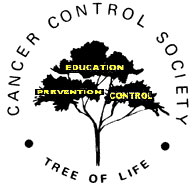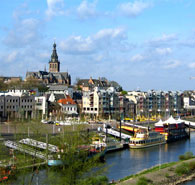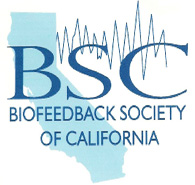Archive for the ‘Conferences’ Category
Wednesday, September 12th, 2007
 One of the virtues of living in Los Angeles is that interesting conferences come to visit. I had occasion recently to attend the 35th annual meeting of the Cancer Control Society. It was illuminating to see one of these meetings from the perspective of an outsider. One of the virtues of living in Los Angeles is that interesting conferences come to visit. I had occasion recently to attend the 35th annual meeting of the Cancer Control Society. It was illuminating to see one of these meetings from the perspective of an outsider.
Here we had yet another meeting of professionals who were largely sitting outside of the monolith of medicine—outside of the “medical monopoly” in cancer treatment of “poison, carve, or burn.” The mostly-MD speakers did not mince words. The flavor was a bit like the DAN Think Tank (Defeat Autism Now), and the American Academy of Pain Management, which are also populated by disaffected MDs. Everywhere there are rogue MDs looking for organizational frameworks where their creativity can be expressed; where they can escape the strictures of mainstream practice.
It had already been my impression that we are on the cusp of major breakthroughs in cancer treatment, and here it became clear that that has already been happening. The process has been under way, apparently, for some 35 years already. I picked up some literature dating back to the seventies just to see what current ideas can be traced back that far. (more…)
Posted in Cancer, Conferences, Paradigm | No Comments »
Monday, June 18th, 2007
 The Applied Neuroscience Conference was held in Nijmegen, the Netherlands, from May 17-20. I imagine that for many the experience was as singular and as epochal as the first Winter Brain Conference in Key West was for us in 1993. The Society for Applied Neuroscience chose not to have a conference every year, on the grounds that there would not be sufficient new material to justify the effort! But in response to this planned hiatus an ad-hoc organization formed to put on this conference in The Netherlands, which may well have the highest density of neurofeedback practitioners anywhere in the world. The Applied Neuroscience Conference was held in Nijmegen, the Netherlands, from May 17-20. I imagine that for many the experience was as singular and as epochal as the first Winter Brain Conference in Key West was for us in 1993. The Society for Applied Neuroscience chose not to have a conference every year, on the grounds that there would not be sufficient new material to justify the effort! But in response to this planned hiatus an ad-hoc organization formed to put on this conference in The Netherlands, which may well have the highest density of neurofeedback practitioners anywhere in the world.
There were some 220 attendees, with 21 nationalities represented, of which 50% were from Holland. Appropriately, the conference was held in Nijmegen, where some 23% of the working population is concerned with either health care or education. It is also a very healthy place to live. The dominant form of transport in this university town is the bicycle. I estimated that there were some 1300 bicycles parked at the train station in dedicated space. One did not see obesity prominently anywhere. (more…)
Posted in Conferences, Neurofeedback, Research | No Comments »
Thursday, February 8th, 2007
Among the principal neurofeedback venues, the Winter Brain Conference has had perhaps the best shot over the years at attracting newcomers to the field with the diversity and vitality of its program. The pricing threshold was always too high to attract casual interest, however. This year, pricing was reduced along with the length of the conference, but the decline in attendance only continued. Hemmed in by proximity to the turn of the New Year and the early AAPB Conference in Monterey, the meeting failed to attract many of the usual speakers and attendees. We were also caught in Palm Springs’ brief winter, so even the jaccuzzis were not being frequented. With all of the conferences in California this year, perhaps this was the year for Winter Brain to move back East. Even the Biofeedback Society of California is combining its efforts with the AAPB and ISNR this year rather than staging a separate event.Whenever a meeting like this goes counter to the organic growth that is propelling the field forward, one is tempted to slide back into self-criticism. At times like these, I take solace in the fact that people such as Karl Pribram seem to thoroughly enjoy themselves at these affairs and feel like that they have finally found a congenial crowd. Pfurtscheller said the same of the Winterthur conference a couple of years ago. (more…)
Posted in Conferences, Neurofeedback | No Comments »
Thursday, January 4th, 2007
 It was my hope that the Biofeedback Society of California Annual Conference would offer a favorable climate for the cross-fertilization between peripheral and EEG biofeedback that now badly needs to occur. In actual fact, the rather large program made for considerable fragmentation and splintering of the audience, as nearly everyone gravitated to their own traditional priorities. Tribalism won out again, an opportunity lost. Sue and I were almost the only ones who actually addressed the main topic of evidence-based practice, but nevertheless our audience was mainly neurofeedback people. It was my hope that the Biofeedback Society of California Annual Conference would offer a favorable climate for the cross-fertilization between peripheral and EEG biofeedback that now badly needs to occur. In actual fact, the rather large program made for considerable fragmentation and splintering of the audience, as nearly everyone gravitated to their own traditional priorities. Tribalism won out again, an opportunity lost. Sue and I were almost the only ones who actually addressed the main topic of evidence-based practice, but nevertheless our audience was mainly neurofeedback people.
The program did, however, offer some real gems that have broad implications for healthcare. Robert Gorter, MD, who is both Associate Professor at the UCSF School of Medicine and head of oncology research at a Berlin hospital, talked of new perspectives in cancer research. Gorter is also involved with anthroposophical medicine in Europe, which attempts to practice more naturalistically and comprehensively. The thrust in cancer research is toward strategies of immunomodulation, with cancer largely seen as an immune deficiency condition. Our immune systems are conducting a perpetual campaign against tumor formation. That is the steady state. When that process fails, boosting the immune system should be invoked as a remedy. (more…)
Posted in Biofeedback, Conferences, Neurofeedback, Research | No Comments »
Monday, November 27th, 2006
The 2006 ISNR Conference was held in a congenial setting in Atlanta with some 350 in attendance. That’s more than fifty percent of the membership, which is a good turnout. On this occasion, BrainMaster celebrated its ten-year anniversary with a festive evening. The overall attendance notwithstanding, many of the talks were only sparsely attended. One reason was parallel sessions. One wonders if it isn’t time to rethink conference organization in view of what is now possible with web-casting and inexpensive mass storage media.
The highlights of the conference among the programs I attended included the continuing work of Rob Coben with the autism spectrum using both HEG and EEG neurofeedback, and documenting change with a variety of assessment instruments. Rob is now training at low EEG frequency if the coherence anomalies fall in that range. He compared coherence-based training with inter-hemispheric training. The inter-hemispheric bipolar training yielded better outcomes on attentional measures than the coherence-based training, but all other measures tended to favor the coherence-based protocols. The frequency range employed here fell into the range of 7-14 Hz, the range over which the deviations were greatest. (more…)
Posted in Conferences, Neurofeedback | No Comments »
Wednesday, April 5th, 2006
It is best to report on the conference before memory grows stale. My overall impression was that creative ferment may be returning to this venue. Evolutionary developments are more likely at interfaces between disciplines than they are within monocultures, and the AAPB offers the natural forum for the interaction between biofeedback and neurofeedback. The reintegration of biofeedback with neurofeedback is the critical challenge for our field in these times. The increasing interest in my mechanisms workshop among people whose primary identification remains with biofeedback testifies to this felt need.
The AAPB is continuing its reach out to other disciplines by bringing in noted speakers, but I fear that many of these take their task too literally. They bring us their research, but they may go away with very little more than they came with. David Spiegel of Stanford talked of “Mind Matters in Illness,” but even in the very attempt to highlight the need for comfort, social support, and stress management in major illness, he ends up trivializing the mind-body connection. Perhaps we should be grateful for the fact that mainstream MDs are now talking forthrightly about mindfulness training and hypnosis. Even in that regard I suspect this is not the kind of conversation MDs are having with each other. (more…)
Posted in Conferences | No Comments »
|
|
Subscribe to Email Newsletter
The EEG Info Newsletter circulates via email at least once a month. A variety of topics related to the Neurofeedback / EEG Biofeedback field are covered in over 200 articles.
|
 One of the virtues of living in Los Angeles is that interesting conferences come to visit. I had occasion recently to attend the 35th annual meeting of the Cancer Control Society. It was illuminating to see one of these meetings from the perspective of an outsider.
One of the virtues of living in Los Angeles is that interesting conferences come to visit. I had occasion recently to attend the 35th annual meeting of the Cancer Control Society. It was illuminating to see one of these meetings from the perspective of an outsider.
 The Applied Neuroscience Conference was held in Nijmegen, the Netherlands, from May 17-20. I imagine that for many the experience was as singular and as epochal as the first Winter Brain Conference in Key West was for us in 1993. The Society for Applied Neuroscience chose not to have a conference every year, on the grounds that there would not be sufficient new material to justify the effort! But in response to this planned hiatus an ad-hoc organization formed to put on this conference in The Netherlands, which may well have the highest density of neurofeedback practitioners anywhere in the world.
The Applied Neuroscience Conference was held in Nijmegen, the Netherlands, from May 17-20. I imagine that for many the experience was as singular and as epochal as the first Winter Brain Conference in Key West was for us in 1993. The Society for Applied Neuroscience chose not to have a conference every year, on the grounds that there would not be sufficient new material to justify the effort! But in response to this planned hiatus an ad-hoc organization formed to put on this conference in The Netherlands, which may well have the highest density of neurofeedback practitioners anywhere in the world. It was my hope that the Biofeedback Society of California Annual Conference would offer a favorable climate for the cross-fertilization between peripheral and EEG biofeedback that now badly needs to occur. In actual fact, the rather large program made for considerable fragmentation and splintering of the audience, as nearly everyone gravitated to their own traditional priorities. Tribalism won out again, an opportunity lost. Sue and I were almost the only ones who actually addressed the main topic of evidence-based practice, but nevertheless our audience was mainly neurofeedback people.
It was my hope that the Biofeedback Society of California Annual Conference would offer a favorable climate for the cross-fertilization between peripheral and EEG biofeedback that now badly needs to occur. In actual fact, the rather large program made for considerable fragmentation and splintering of the audience, as nearly everyone gravitated to their own traditional priorities. Tribalism won out again, an opportunity lost. Sue and I were almost the only ones who actually addressed the main topic of evidence-based practice, but nevertheless our audience was mainly neurofeedback people.